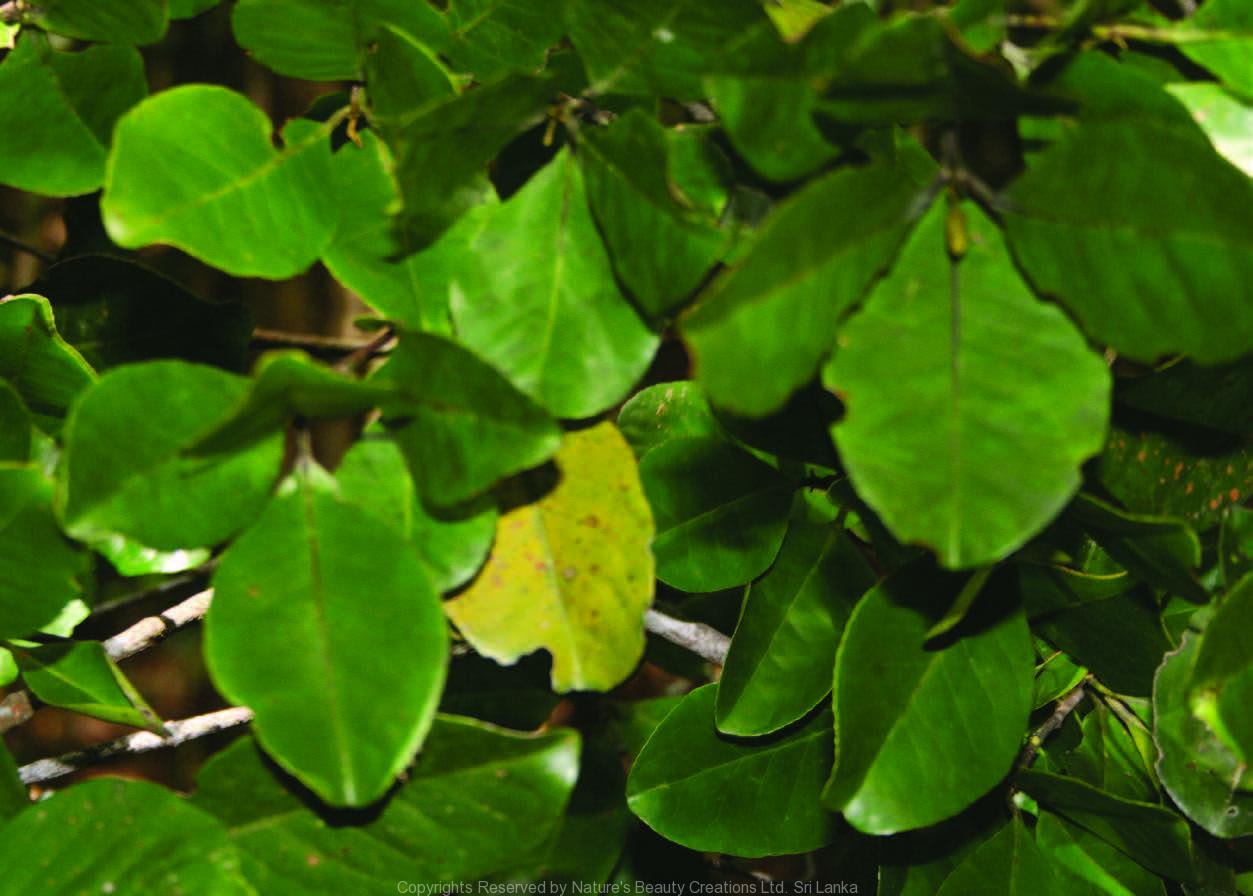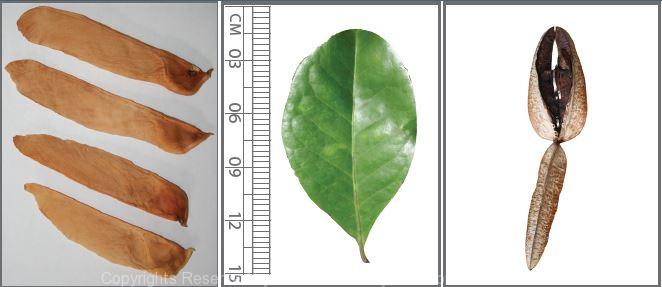

Traditional Knowledge
Useful plant parts :
Bark
Uses in traditional medicine :
- Fine powder of dried inner bark is mixed in bee honey and applied externally around the eye for eye diseases and on forehead for headaches
- Improves the complexion
Scientific Research
Chemical constituents:
Triterpenes: friedelin and D: A-friedo-olean derivatives from inner bark and zeylasterone, demethylzeylasterone, phenolic dinor-triterpenes: 23-hor-6- oxopristimerol, 23-nor-6-oxodemethylpristimerol from plant; dulcitol and 4-O-methylepigallocatechin from inner root bark
Bioactivity :
Dimethylzeylasterone: selectively inhibits the growth of breast cancer cells, topoisomerase IIα inhibitor; aqueous extract of stem bark: hypoglycaemic
Clinical:
References : Dayananda, P. D. et al., (2008), The effect of the aqueous stem bark extract of Kokoona zeylanica Thw. on the blood glucose level of mice, Pharmacognosy magazine, 4(16), 308-314. Furbacher, T. R. and Gunatilaka, A. A. L., (2001), Catalytic Inhibition of Topoisomerase IIα by Demethylzeylasterone, a 6-Oxophenolic Triterpe- noid from Kokoona zeylanica, Journal of Natural Products, 64(10), 1294-1296. Gamlath, C. B. et al., (1988), Two phenolic friedo-23, 24-dinoroleanane triterpenes from Kokoona zeylanica, Phytochemistry, 27(10), 3221- 3224. Gunatilaka, A. A. L. et al., (1982), Friedelin, D:A-friedo-olean-3,21-dione and 21α-hydroxy-D:A-friedo-olean-3-one from Kokoona zeylanica, Phytochemistry, 21(8), 2061-2063. Gunaherath, G. M. K. B and Gunatilaka, A. A. L., (1982), Dulcitol and (-)4′-O-Methylepigallocateehin From Kokoona zeylanica, Journal of Natural Products, 45(2), 140-142.
Copyrights Reserved By
Natures Beauty Creations




